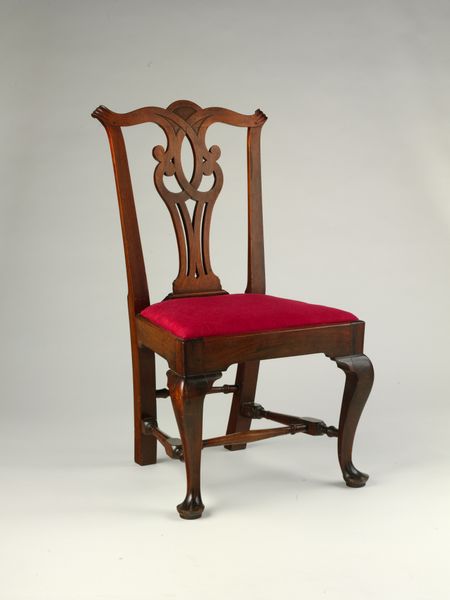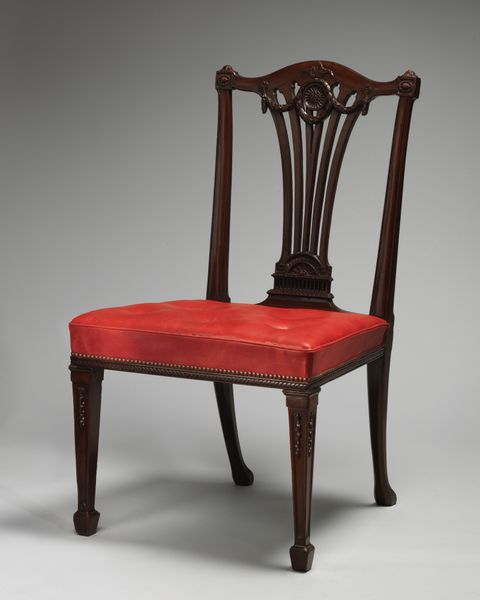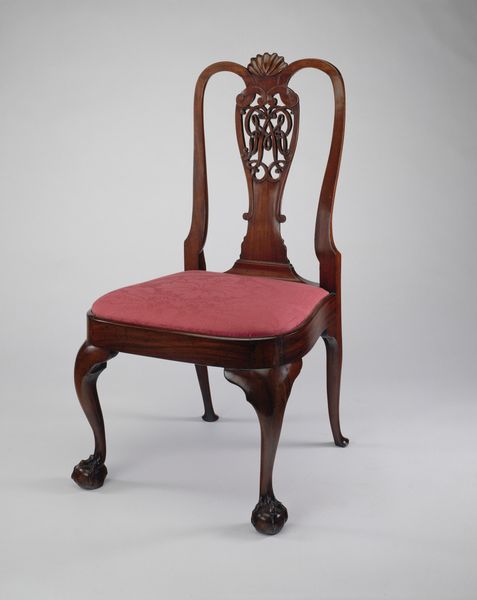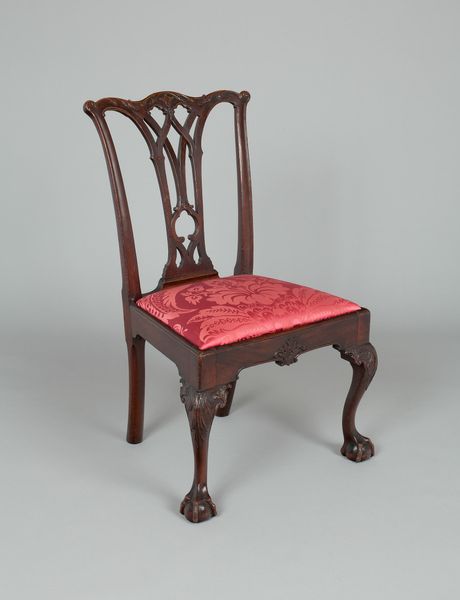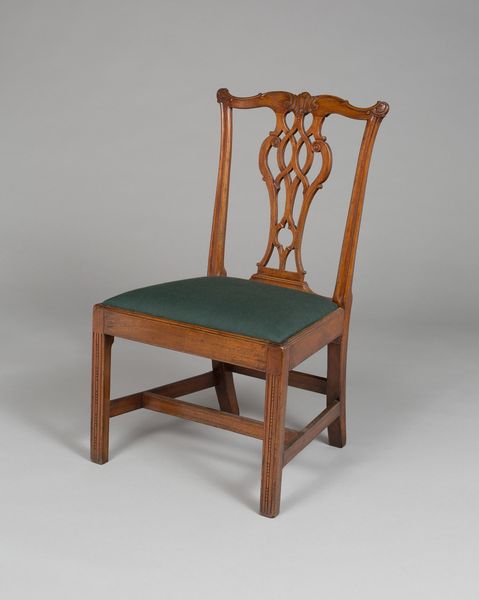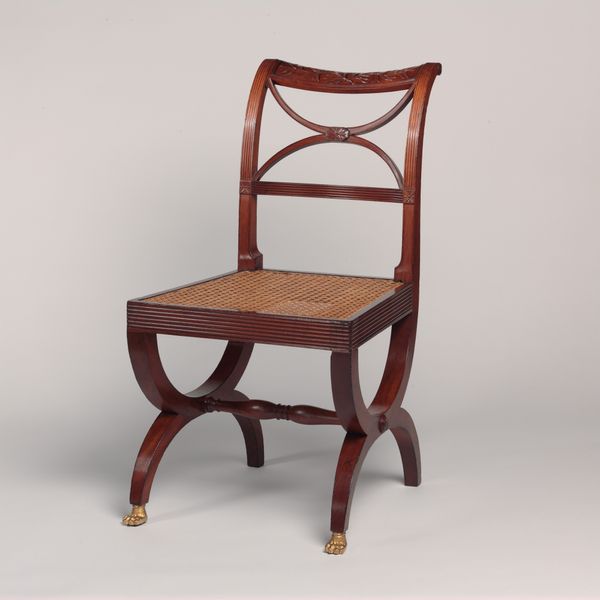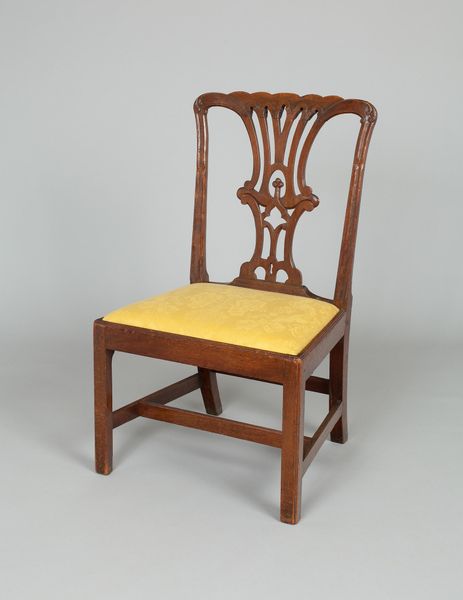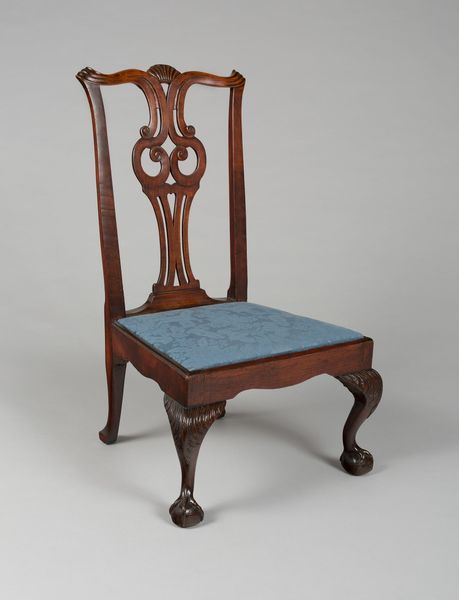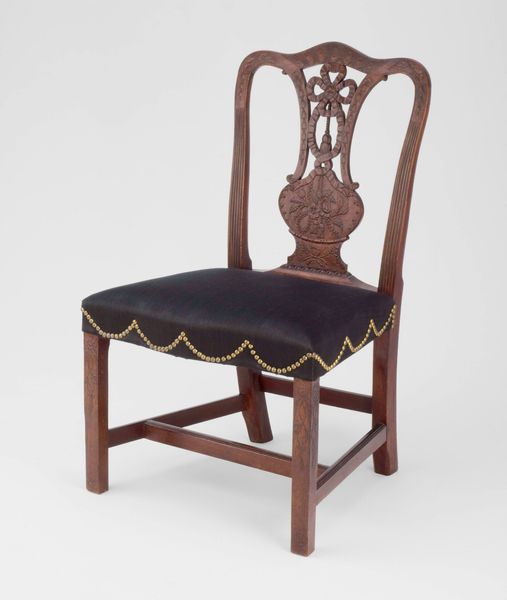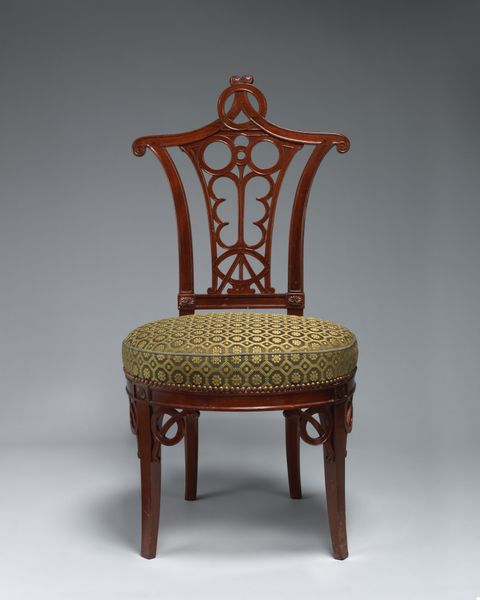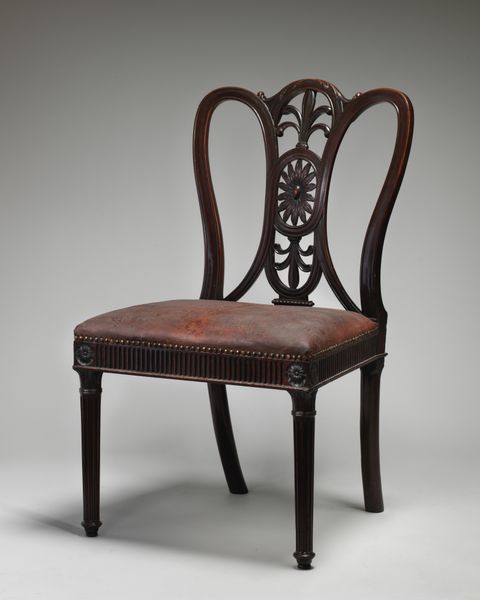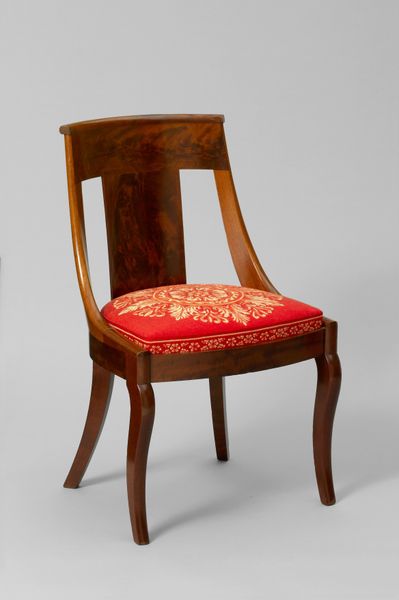
Dimensions: 93.3 × 54.6 × 44.8 cm (36 3/4 × 21 1/2 × 17 5/8 in.)
Copyright: Public Domain
Editor: This elegant Side Chair, crafted between 1760 and 1785 by an anonymous artist, presents a fascinating study in wood and carving. The ornate legs especially catch my eye. What can you tell me about it? Curator: It's crucial to understand the means of production here. Look at the labour embedded in the carving of the legs, which terminates in ball-and-claw feet—these were likely made using specialized tools by skilled artisans who might or might not have been fairly compensated for their work. Who benefits from this artistry? What are the conditions under which the makers toiled? Editor: So, it’s not just about aesthetics but also the social context of its creation. Curator: Exactly. The use of wood, presumably a high-quality timber given its time, speaks volumes about the chair's intended market and the exploitation of resources at that time. And let's not forget the textile on the seat—was it locally sourced, or imported from distant colonies? Each element tells a story of global exchange, social class and labor. Editor: The Rococo style usually emphasizes surface appeal and aesthetic over structure, no? Curator: That's a generalization we need to complicate. While it prioritizes elaborate ornament and playful curves that mask structural clarity, the "appeal" depends on the circulation of these highly crafted items. Consider the chair's place within a larger interior, reflecting on systems of power through ownership and consumption. Editor: Interesting. It highlights the relationship between materials, labour, and social status. It reframes my appreciation for the work. Curator: Indeed. We shift from admiring it as a beautiful object to understanding it as a product of intricate, often unequal, relationships.
Comments
No comments
Be the first to comment and join the conversation on the ultimate creative platform.
